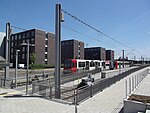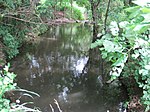The Max Planck Institute for Plant Breeding Research was founded in Müncheberg, Germany in 1928 as part of the Kaiser-Wilhelm-Gesellschaft. The founding director, Erwin Baur, initiated breeding programmes with fruits and berries, and basic research on Antirrhinum majus and the domestication of lupins. After the Second World War, the institute moved west to Voldagsen, and was relocated to new buildings on the present site in Cologne in 1955.
·The modern era of the Institute began in 1978 with the appointment of Jeff Schell and the development of plant transformation technologies and plant molecular genetics. The focus on molecular genetics was extended in 1980 with the appointment of Heinz Saedler. The appointment in 1983 of Klaus Hahlbrock broadened the expertise of the Institute in the area of plant biochemistry, and the arrival of Francesco Salamini in 1985 added a focus on crop genetics. During the period 1978-1990, the Institute was greatly expanded and new buildings were constructed for the departments led by Schell, Hahlbrock and Salamini, in addition to a new lecture hall and the Max Delbrück Laboratory building that housed independent research groups over a period of 10 years.
A new generation of directors was appointed from 2000 with the approaching retirements of Klaus Hahlbrock and Jeff Schell. Paul Schulze-Lefert and George Coupland were appointed in 2000 and 2001, respectively, and Maarten Koornneef arrived three years later upon the retirement of Francesco Salamini. The new scientific departments brought a strong focus on utilising model species to understand the regulatory principles and molecular mechanisms underlying selected traits. The longer-term aim is to translate these discoveries to breeding programmes through the development of rational breeding concepts. The arrival of a new generation of Directors also required modernisation of the infrastructure. So far, this has involved complete refurbishment of the building that houses the Plant Developmental Biology laboratory (2004), construction of a new guesthouse and library (2005), planning of new buildings for the administration and technical workshops (2009), and a new laboratory building completed in May 2012. The new laboratory building includes a section that links the three scientific departments, offices and the Bioinformatics Research Group.









